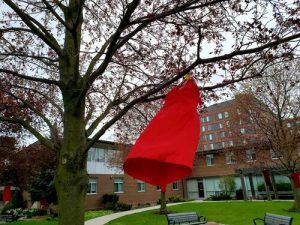2.1 Sexual Violence and Indigenous Peoples
Canada as a nation is built upon a fundamental lack of consent of Indigenous Peoples and so when we speak about sexual violence, we cannot do so without highlighting the direct connection to the horrific tactics used to colonize and assimilate the First Nations, Metis, and Inuit Peoples of Turtle Island – what many of us now call North America.
Sexual violence is intimately intertwined in Indigenous Peoples’ past and ongoing traumas from colonization; from first contact in North America, to the horrifying abuses perpetrated upon children in residential schools, to the occupation of land and accessing of natural resources without consent, to the forced sterilization of Indigenous women, to the thousands of Indigenous women, girls and Two-Spirit people who experienced sexual violence, physical violence, and death as highlighted by The Report of the National Inquiry into Missing and Murdered Indigenous Women and Girls.
Colonial settlers took power away from Indigenous Peoples by these acts, which allowed them to seize control over mass groups of people and land. The harm we do every day to our land and environment is also violence against Indigenous peoples who advance land stewardship – to respect, nurture, and advocate for the land.
While we discuss the hard truths of our collective, colonial history in Canada, we cannot do so without also noting the strength, perseverance, and nobility of the Indigenous Peoples of Canada. Their ability to restore their languages, cultural protocols, and practices despite hundreds of years of trauma is truly remarkable.
Sexual violence continues to be used today as a tool of colonization and war.

Jamie Black, a Métis multidisciplinary artist based in Winnipeg, responded to the Missing and Murdered Indigenous Women and Girls across Canada by displaying red dresses. Red – the colour of blood, anger, spirituality, and love. The REDress Project.
This picture was taken in the spring of 2021 on the St. Jerome’s University campus in the University of Waterloo showing red dresses displayed by Andrew Deman, a professor in the English Department, to honour the Missing and Murdered Indigenous Women and Girls. #MMIWG
References
Kellar, K. (2021, April 28). Local organizations band together for MMIWG Awareness month. Fort Frances Times. https://fftimes.com/news/district-news/local-organizations-band-together-for-mmiwg-awareness-month
Sexual Violence Training Development Team. (2021). Active bystander intervention: Training and facilitation guide. BCcampus. https://opentextbc.ca/svmbystander/
St. Jerome’s University. (2021, May 5). REDress Project Installation a Symbol of Inequity and Hope. https://www.sju.ca/news/redress-project-installation-symbol-inequity-and-hope
